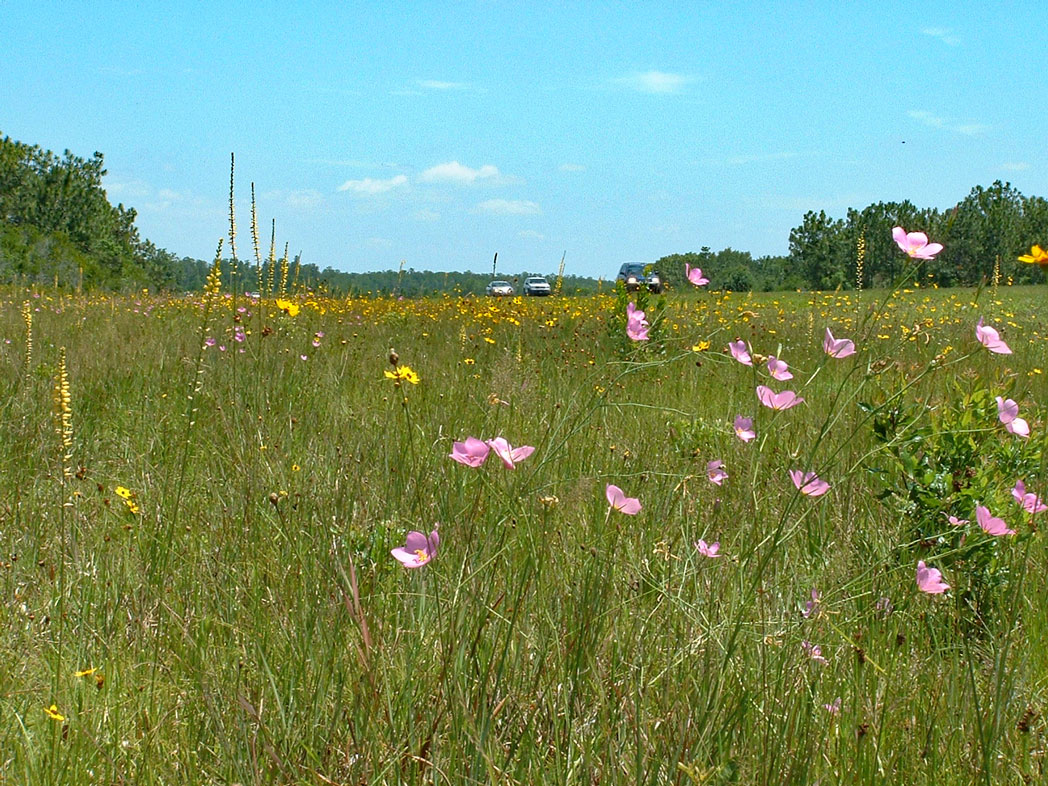Check wet areas for colorful summer wildflowers
Pictured above: Yellow colicroot (Aletris lutea), Leavenworth’s tickseed (Coreopsis leavenworthii) and Rosegentian (Sabatia spp.) bloom along a Central Florida road. Photo by Jeff Norcini
by Jeff Norcini
Summer offers a wide array of colorful, showy wildflowers in moist to inundated areas, especially in nature preserves along trails and roadside ditches and swales in rural areas.
Be cautious if venturing into a moist or wet area to get a close view of wildflowers. Glistening moist soil may be deep muck in which you can lose a shoe, and water may be much deeper than it looks, so it’s best to view these wildflowers from a dry spot.
The wildflowers below occur in many counties throughout Florida. Clicking on the species will lead to a map showing where the species occurs as well as photos.
- Rosegentians
- Skyflower (Hydrolea corymbosa)
- Milkworts
- Milkweeds
- Rosemallows
- Bandanna-of-the-everglades (Canna flaccida)
- Winged loosestrife (Lythrum alatum lanceolatum)
Click it, don’t pick it
When you are out and about enjoying the summer beauty that Mother Nature has blessed us with, please don’t pick wildflowers. If you want to preserve the memory of a wildflower, take a picture — it will last longer. Many of our native wildflowers reproduce only by seed. Picking a flower reduces the ability of that plant to reproduce and for that population of wildflowers to sustain itself. If you want to pick wildflowers, plant some in your landscape or in containers on your patio or porch. Wildflower seed packets are available from the Florida Wildflower Seed and Plant Growers Association. Click for seed packet availability and ordering. Seed packets of Florida native wildflowers also may be available at garden centers specializing in Florida native plants. To find a native garden center near you, visit the Florida Association of Native Nurseries’ website.
Take action
Contact your county maintenance supervisor to ask that roadside wildflowers in specific locations be spared. On state and U.S. highways, contact your Florida Department of Transportation District Wildflower Coordinator.

